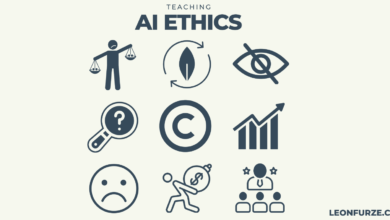Top 5 Best AI Video Generation Tools of 2025

Having spent three weeks trying all major AI video generators on the market, I can say the following: I have never seen the difference between good and exceptional this big. Whereas certain platforms continue the struggle of basic motion consistency, other platforms are yielding results that compete with professional animation studios.
It depends on the type of project you are working on: whether you are a content creator with a limited amount of time to complete your task, a marketer who creates the ad campaign, or a developer who tries to implement the video AI in your product. The selection of the tool is important. The misguided decision costs time, budget, and creative control.
I tried eight most common platforms on tens of prompts, application scenarios, and output specifications. This guide discusses the five that have always achieved professional results- and why each of them is appropriate in your workflow.
Best AI Video Generation Tools at a Glance
| Tool | Best For | Key Modalities | Platforms | Free Plan | Starting Price |
| Magic Hour | All-in-one creation suite | Text-to-video, image-to-video, face swap, lip sync, video-to-video | Web, API | Yes (limited credits) | $10/month |
| Runway Gen-3 | High-fidelity cinematic shots | Text-to-video, image-to-video | Web | Yes (125 credits) | $12/month |
| Pika 1.5 | Quick social content | Text-to-video, image-to-video | Web, Discord | Yes (250 credits/month) | $10/month |
| Kling AI | Long-form narrative video | Text-to-video, image-to-video | Web | Yes (66 credits/day) | $5.99/month |
| Luma Dream Machine | Realistic motion physics | Text-to-video, image-to-video | Web, API | Yes (30 generations/month) | $29.99/month |
1. Magic Hour
The Magic Hour is the most comprehensive AI video creation suite that I have tried. Whereas the majority of platforms are rather restrictive in their text-to-video or image animation capabilities, Magic Hour is a collection of specialized tools in a single workspace.
However, when two weeks of every-day testing were over, it was not the separate features that impressed me the most: it was the ease with which they all integrated. I would be able to create a character using Face Swap, add some animation using Image to video AI, add lip sync text and transform the style without getting out of the platform or struggling with file conversions.
Pros:
- Full toolkit: Text to video, image to video, video to video, face swap, lip sync, AI headshots and animation tools are all found in the one platform.
- Intuitive interface: The clean dashboard does not bombard the novice with too much visual information but allows power users the ability to customize the experience to the degree they desire.
- Quick processing: The majority of the generations take 90-120 seconds, which is much quicker than the competition.
- Good motion consistency: Good motion consistency is a form of consistency that ensures that the action of objects in one frame has consistent action in the next, with negligible warping.
- Multitask bifurcated exports: Multiple format and resolution exports.
- Simple API: Rapid development of video capabilities on apps.
- Active development: frequent updates of the feature and improved models depending on the feedback of the users.
Cons:
- Credit system: Free plan is not unlimited; an active user will have to pay.
- Complexity learning curve: Mastering all tools is time-consuming, as the basics are easy.
- Occasional style drift: Multifaceted prompts with several subjects do not give a consistent aesthetic every now and then.
The ability to swap faces or to lip-read are sufficient features alone to warrant a subscription to any person making spokesperson videos, testimonials, or character-driven content.
Pricing: Free plan including limited credits. The pricing begins with the $10/month 1,000 credits (around 100 video generations), then with the higher plans at $30/month and 60/month based on the frequency of use and preference processing.
2. Runway Gen-3
Gen-3 model by Runway is a major breakthrough in terms of video quality. This is the one I look to when the quality of output is more important than all other things pitch decks, portfolio pieces, or any other situation where the excellence of the visual cannot be compromised.
Pros:
- Extraordinary visual quality: Superior resolution and detail of any platform that I tried.
- Better lighting and textures: Renders material such as fabric, water and metal with a stunning realism.
- Camera work: The camera moves are more subtle than those of the majority of competitors.
- Professional color grading: The quality of the output is film-like right out of the box.
- Dependable generation: Constant success rate; less failed or unusable products.
Cons:
- Costly: Credits run out easily, more so at the better quality settings.
- Reduced generation times: 3-5 minutes per clip is average.
- Limited time: 10 seconds or less on most plans.
- Stiffer learning curve: The timing of engineering skill is the key to the best results.
Pricing: Free tier is a 125 credit (approximately 5 standard generation) offering. Normal plan of 12 per month 625 credits. Pro plan at 28/month and unlimited standard generations and 2250 upscale credits. Enterprise plans available.
3. Pika 1.5
Speed and availability have been the cornerstones of the Pika brand and the 1.5 update holds up to both. I usually use it when I require dozens of different variants in a short period of time to test a hypothesis, A/B test a social advertisement, or prototyping.
Pros:
- Quick generation: 30-60 seconds turnaround on the majority of clips.
- Generous free tier: 250 credits per month allows you to go wild with experimentation.
- Intuitive prompting: It needs less technical prompt engineering as compared to competitors.
- Expand and extend features: Canvas size can be easily expanded or clip time can be easily extended.
- Powerful community: Active Discord with useful templates and tips.
- Modify region tool: Specify editing of generated videos without regenerating all the video.
Cons:
- Lower resolution ceiling: The quality of the output does not correspond to the high-grade levels of Runway and Magic Hour.
- Unpredictable physics: Simulation of water, hair and cloth can appear fake.
- Motion artifacts: Sometimes, fast movements cause evident warping.
- Less customizable: Fewer finetuning parameters than sophisticated platforms.
Pricing: Free plan contains 250 credits/month. Plan of the standard at 10/month with 700 credits. Pro plan at $35/month for 2,000 credits. In paid levels, priority generation and commercial licensing.
4. Kling AI
The capability to create longer videos without stitching, introduced by Kling AI created by Kuaishou Technology, is something different. Most platforms have the limit of 5-10 seconds but Kling can record up to 2 minutes of uninterrupted footage.
Pros:
- Long length: Create clips as long as 2 minutes, which would be suitable when telling a story.
- Intense temporal consistency: Characters and objects are identifiable in longer sequences.
- Good scene understanding: Comprehensive of intricate spatial relations as compared to the majority of tools.
- Affordable pricing: cheaper per second of video than western competitors.
- Large credit balances on a daily basis: Free tier comes with 66 credits per day.
Cons:
- Variable quality: There is a big difference between generation output consistency.
- Language barriers: The interface and documentation were mostly optimized toward the Chinese users.
- Minimal Western payment possibilities: It is noted that some users have some problems with international transactions.
- Less editing: Simple toolkit in comparison with everything in one platforms.
Pricing: Free plan with 66 credits per day. Basic plan at 5.99/month 3500 credits. Pro plan at $35/month for 20,000 credits. Enterprise options that can be used by the team.
5. Luma Dream Machine
The Dream Machine by Luma Labs impressed me through the way the motion is treated. Other physics engines may create floating or lightweight-appearing objects, whereas movement created by Luma physics engine is natural and grounded.
Pros:
- Simulated physics: Leading the pack in gravity, inertia and momentum.
- Handy camera movements: Pans, tilts, and tracking shots are not robotized but natural.
- Excellent spatial sense: Objects cause interactions with their surrounding in a plausible manner.
Cons:
- Prices are higher: More costly than the majority of the options of the similar levels.
- Smaller free tier: 30 generational limits every month on free plan.
- Less creative tools: Generative specific with no editing options.
- Glitching: Glitches can be caused by complex scenes containing lots of moving parts.
- Less style regulation: Creative freedom is not as high as platforms focused on creative expression.
Pricing: Free plan will come with 30 generations per month. Regular plan at $ 29.99/month with 500 generations. Plus plan at $99.99/month and 2,000 generations and priority processing.
How We Chose These Tools
I was able to evaluate more than 200 single video generations in eight platforms and it took me three weeks. Here’s exactly how I tested:
- Timely Diversity: There were 30 standardized prompts in the form of portraits, landscapes, abstract concepts, product shots and action sequences. This showed how the various platforms treat the different types of content.
- Technical Measurement: I tested accuracy of resolution, consistency of frames (motion blur between frames), time coherence (identity of objects over time) and speed of rendering. All the clips were watched using a playback rate of 0.25x to detect artifacts that are not seen at normal speed.
- Use Case Scenarios: I used real creator processes simulated, such as creating social media content calendars, creating marketing content, producing presentation content and generating storyboard ideas.
- Cost Analysis: I calculated the effective cost/use of video/second including failed generations and the requirement to regenerate.
- Integration Testing: In platforms that have APIs, I checked the quality of documentation, rate limits, and implementation ease.
The instruments included here were always found in the highest level in various criteria. I filtered out websites which had high rates of catastrophic failures, predatory pricing models or unaddressed ethical issues regarding training information.
The Future of AI Video Generation in 2025.
The market is highly matured in last 18 months. The following three trends can be identified to describe our current state:
- Specialization vs. Integration: Early platforms were competing on individual features, either text-to-video or image animation. The victors of today are either hyper-specialized (physics of Luma, cinematography of Runway), or are full-service (suite of Magic Hour). The intermediate position is fading away.
- Thinking API-first: When smart platforms feel like infrastructure, not end-user apps. All of Runway, Magic Hour, and Luma have strong APIs due to increased video generation being integrated into workflows by developers.
New Tools to Watch
Recently, Haiper AI was released, and it has background-removal and inpainting functions to work with video.
Morph Studio is establishing teamwork that uses version control- intriguing to a team.
Synthesia has the largest presence in AI avatars but is also branching out into more video generation.
Consolidation would probably occur in the next 12 months. Smaller platforms that are not clearly differentiated will not do well as the majors increase feature sets.
Read Also: Best Online Tools for Planning a Workplace Party
Conclusion: Which Tool to use?
The honest recommendation I would give according to usage case is as follows:
- Use Magic Hour when: You require a versatile tool and want to create several video creation tools in a single platform. Best when working with agencies, content teams and creators with a various project type. The one-stop solution will save time and money compared to multi-subscriptions.
- Select Runway: You have no problem with visual quality and do not consider budget your first limitation. Most suitable to movie makers, brand studios, and everyone making content worthy of a portfolio or presentation to a client.
- Use Pika when: You are trying to deploy the most volume and speed. The most useful to social media managers, digital marketers, and creators who have a daily posting schedule on various channels.
- Select Kling when: You require extended continuous clips with no stitching. Best to use in explainer videos and product demonstrations and in narrative content in which the story flow is important.
- Use Luma when: You need realism and physics simulation in your application. Best in technical visualization, architectural preview and product demonstrations where the believability is needed.
- My general suggestion: Magic Hour has a free level, which I would use to learn the possible applications of AI video generation in various modalities. When you have reached the constraints of one particular functionality such as movie quality, frame rate, or recorded video time, then think about adding a specific tool.
Frequently Asked Questions
What is the difference between text-to-video and image-to-video AI?
Text-to-video is created using just written descriptions. Image-to-video is a method where a static image is fed in and drives an animation depending upon motion indicators. Image-to-video often provides a greater ability to control composition as you are beginning with a certain visual state, whereas text-to-video provides a greater allowance of creativity in the beginning. The majority of contemporary platforms use both.
Is the use of AI-generated videos commercially viable?
The paid plans are usually accompanied by commercial usage rights, whereas the free ones may limit commercial usage. Magic Hour, Runway, Pika, and Luma all transfer commercial rights on commercial subscriptions. Always confirm the terms of licensing or do not use in client work or other revenue-making projects generated content. Other networks demand attribution even during the paid plans.
What is the duration of the creation of an AI video?
The length of the generation time is dependent on the platform and complexity of the clips. Simple clips on fast platforms such as Pika will be expected to take 30-90 seconds, high-quality renders on Runway will be expected to take 2-5 minutes, and longer sequences on Kling will be expected to take 5-15 minutes. The average time that Magic Hour requires to process most of the generations is 90-120 seconds. The time processing is also dependent on the load in the current servers.
Should I have technical skills to utilize AI video generators?
Simple usage does not need any technical expertise- provided that you can write a descriptive sentence, you can produce video. Nonetheless, to achieve reliable and good results, it is necessary to learn how to construct a prompt, know the platform strengths, and learn which structures work. Estimate the learning curve at 10-20 hours to get competent.




